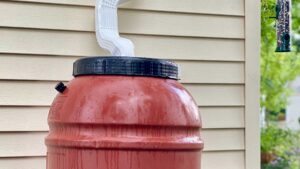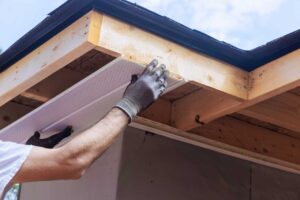Gutter guards are meant to protect, but when they fail, they can cause more harm than good.
For Florida homeowners, gutter guards are a popular upgrade. They’re designed to reduce clogs, limit maintenance, and keep your gutters flowing freely, especially during heavy storms. But like any home improvement, they only work as well as they’re designed and installed to.
If your gutter guards aren’t doing their job, you could be at risk for overflowing gutters, water damage, and even foundation issues. Here are five common signs that your gutter guards aren’t working—and what you can do to fix it.
1. Water Is Overflowing During Rainstorms
The whole point of gutter guards is to keep water moving, not spilling over the edge. If you see water pouring over the sides of your gutters during a storm, it usually means:
- The guards are clogged
- The guards weren’t properly pitched
- The wrong type of guard was installed for your home
In Florida, where rainfall is heavy and fast, your guards need to be designed for high-flow water management. Screen-style guards or reverse-curve systems with poor installation often can’t keep up.
What to do:
Have your system inspected. In many cases, switching to a higher-capacity guard, like fine stainless steel mesh, can solve the issue.
2. Debris Is Still Getting In (and Staying There)
If you see leaves, pine needles, or roofing granules building up inside your gutters despite having guards, your system isn’t sealing out debris effectively. Over time, this leads to clogs, backups, and standing water that breeds mosquitoes.
This issue is common with brush or foam gutter guards, which tend to trap debris rather than shed it.
What to do:
Consider upgrading to a professionally installed mesh guard that fits tightly and sheds debris naturally.
3. You’re Still Cleaning Your Gutters Too Often
One of the main benefits of gutter guards is reduced maintenance. If you find yourself cleaning your gutters every few months, your guards aren’t doing their job—or they weren’t designed for Florida’s tree coverage and storms.
In areas with lots of oak, palm, or pine trees, some guards just can’t keep up.
What to do:
Get a free inspection. A properly installed guard system can reduce cleaning to once per year, or eliminate it altogether.
4. Rust or Mold Is Forming Around the Guards
If you notice rust on the guards or mold developing around your gutter system, that’s a sign of trapped moisture, usually caused by poor airflow or slow drainage.
Some cheaper guard materials break down quickly in Florida’s heat and humidity, accelerating deterioration and moisture buildup.
What to do:
Replace deteriorating or rust-prone guards with corrosion-resistant materials like aluminum or stainless steel mesh.
5. Your Gutters Are Sagging or Pulling Away
Believe it or not, the wrong gutter guard can make your gutter system heavier. If guards are full of wet debris or pooling water, they place extra strain on brackets and fascia boards, leading to sagging or separation.
What to do:
This is a serious issue. Call a professional to inspect the gutter system, replace damaged sections, and ensure that your guard system isn’t contributing to the problem.
Final Thoughts
Gutter guards can be a game-changer for your Florida home—but only if they’re properly matched, professionally installed, and built to handle Florida weather.
If your current system isn’t performing, don’t wait until the next storm hits. A quick inspection and the right upgrade can help protect your home for years to come.



